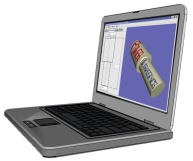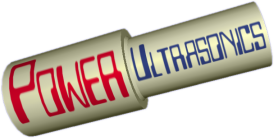A new online ultrasonics components store has just opened at www.UltrasonicsWorld.com. Check their amazing prices for replacement ultrasonics components, fully compatible with the major manufacturers' originals at a fraction of the cost.
You are here
Effects of ultrasonic vibrations - heat and cavitation
Depending on the circumstances, high-power ultrasonics can have different effects (or sometimes no useful effect) on a process, so it's important to understand what effects are possible and why they happen. These are the main (possible) effects:
Heat generation
High-energy mechanical vibrations can very easily be converted to heat, either by friction at interfaces between different parts or by damping ("internal friction") within the materials. This effect is exploited in welding, where plastics and metals are welded with great efficiency because the heat is generated precisely where it's needed - at the surfaces to be joined. The effect can also be a limitation - we talk about power "losses" caused by energy being converted to heat within the transducer, booster and sonotrode and at the interfaces between them.
Cavitation
Whenever ambient pressure is reduced, the boiling point of a liquid is also lowered. If the pressure is reduced far enough then the liquid will begin to boil without needing to be heated (because the boiling point is reduced to below room temperature). When this happens on a small scale, due to localised pressure reduction, small bubbles of vapour are formed - this is called cavitation. It can happen in a liquid subjected to ultrasonic vibrations or in other circumstances where movement creates areas of low pressure (e.g. ship's propellors). Most of the effects are caused not by the formation of vapour bubbles but by their destruction. The low-pressure areas are highly localised and changing all the time (for an ultrasonic standing wave the time between lowest and highest pressure is typically 10 to 25 microseconds). The bubbles can exist only when the pressure is low - they are extremely unstable when it is high so they collapse violently, momentarily creating immense temperatures and pressures. Of course, the collapse of each bubble happens in a microscopically small volume but given a strong, uniform ultrasonic field millions of them throughout the liquid will be formed and destroyed thousands of times per second, so they can affect the bulk properties of the liquid. The effect is exploited in sonochemistry and ultrasonic cleaning.

